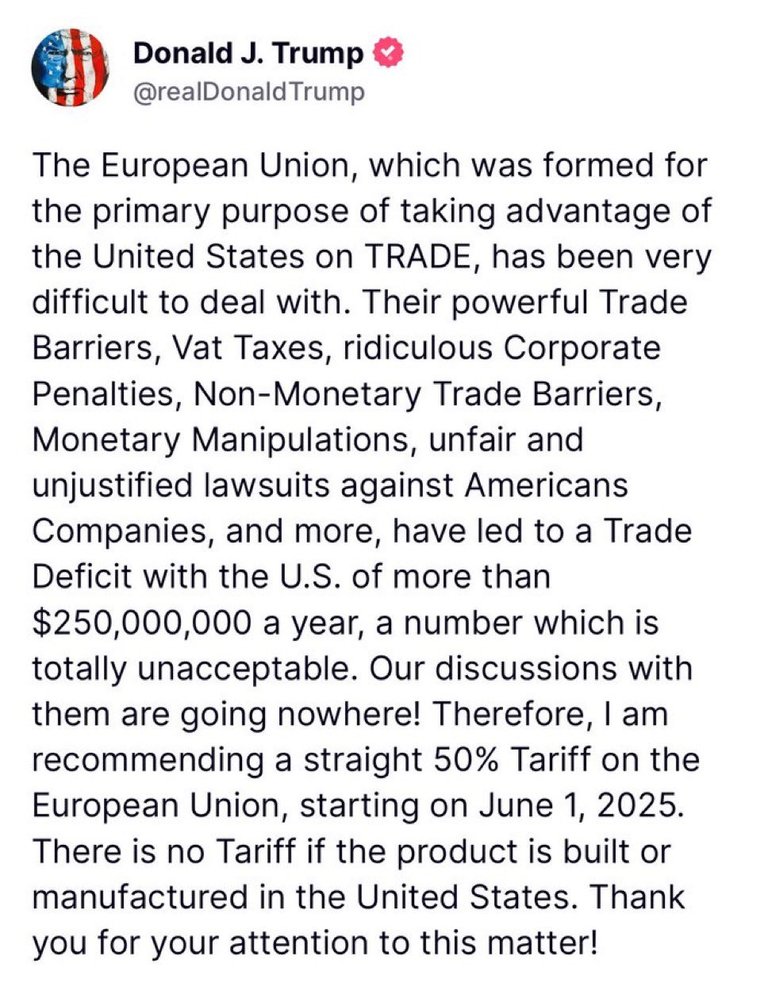President Trump has just announced 50% tariffs on the EU, effective on June 1st 2025. Here is his Truth Social post:
He says it's because negotiations with the EU are going nowhere. Recall that on "Liberation Day" (April 2nd), Trump put 20% tariffs on the EU. But when the markets swooned, he reduced the tariffs to 10% for 90 days, so negotiations could take place.
What happens next?
Luckily we have the template from the Chinese negotiations to guide us. Tariffs of 34% were put on China on April 2nd. The markets had a tantrum and China retaliated. Trump did a counter-retaliation, China responded in kind, back and forth, till it ended up with 145% US tariffs on China and 125% Chinese tariffs on the US.
There it stayed for four weeks till some real pain was felt on both sides: Chinese factories began to close and small US importers of Chinese goods declared bankrupt. Then a deal was done: US tariffs were reduced to 30% and Chinese tariffs to 10%.
The markets cheered even though 30% was only 4% less than the 34% that freaked them out on Liberation Day. 30% was likely the goal all along...
The EU will likely follow the same pattern. They will be under pressure to retaliate in kind.
There will be a stand off for four weeks till businesses squeal. German carmakers like Porsche will pressure the EU Commission to do a deal. American businesses hurt by retaliatory tariffs will pressure Trump.
Eventually there will be a deal with the tariffs reduced to 18%. Everyone will be mightily relieved.
The main difference between the EU and China is that China had and has more leverage over the US. The US really does need the rare earths China sells, and can't source other goods China makes elsewhere. The EU mainly sells luxury goods, and there are plenty of alternatives for high end clothes, cars and wine within the US and around the world.

